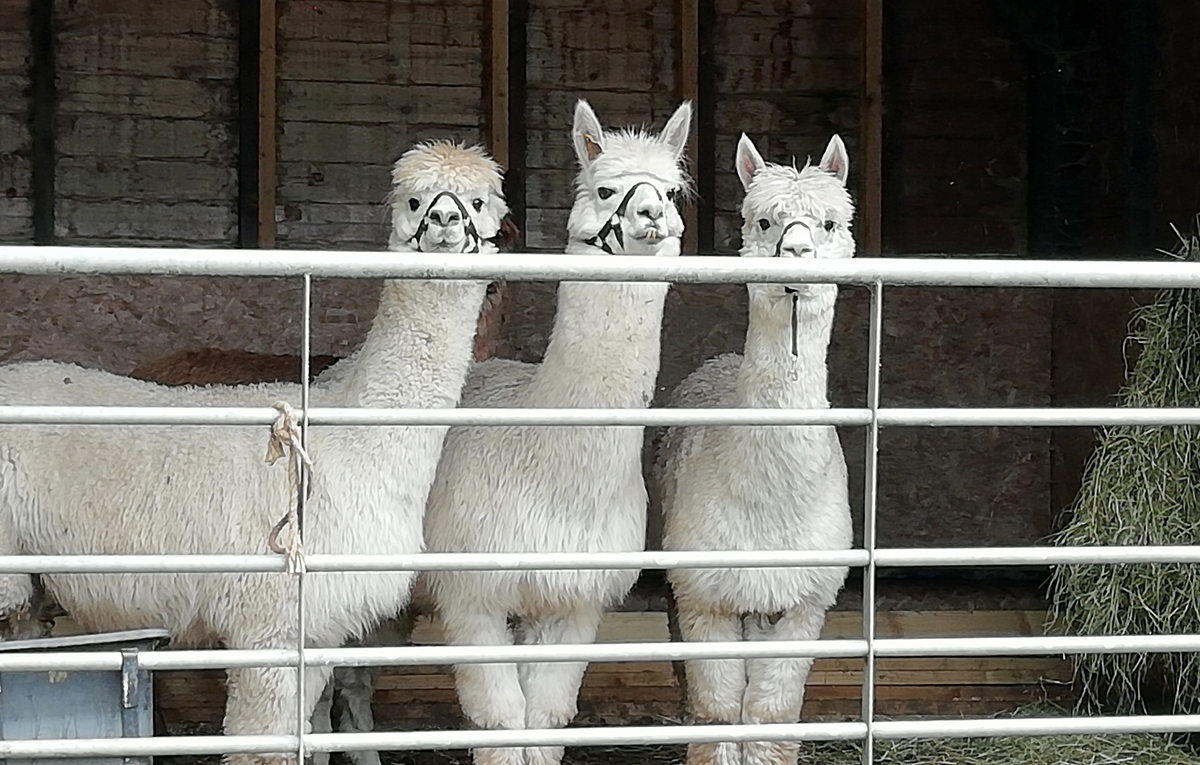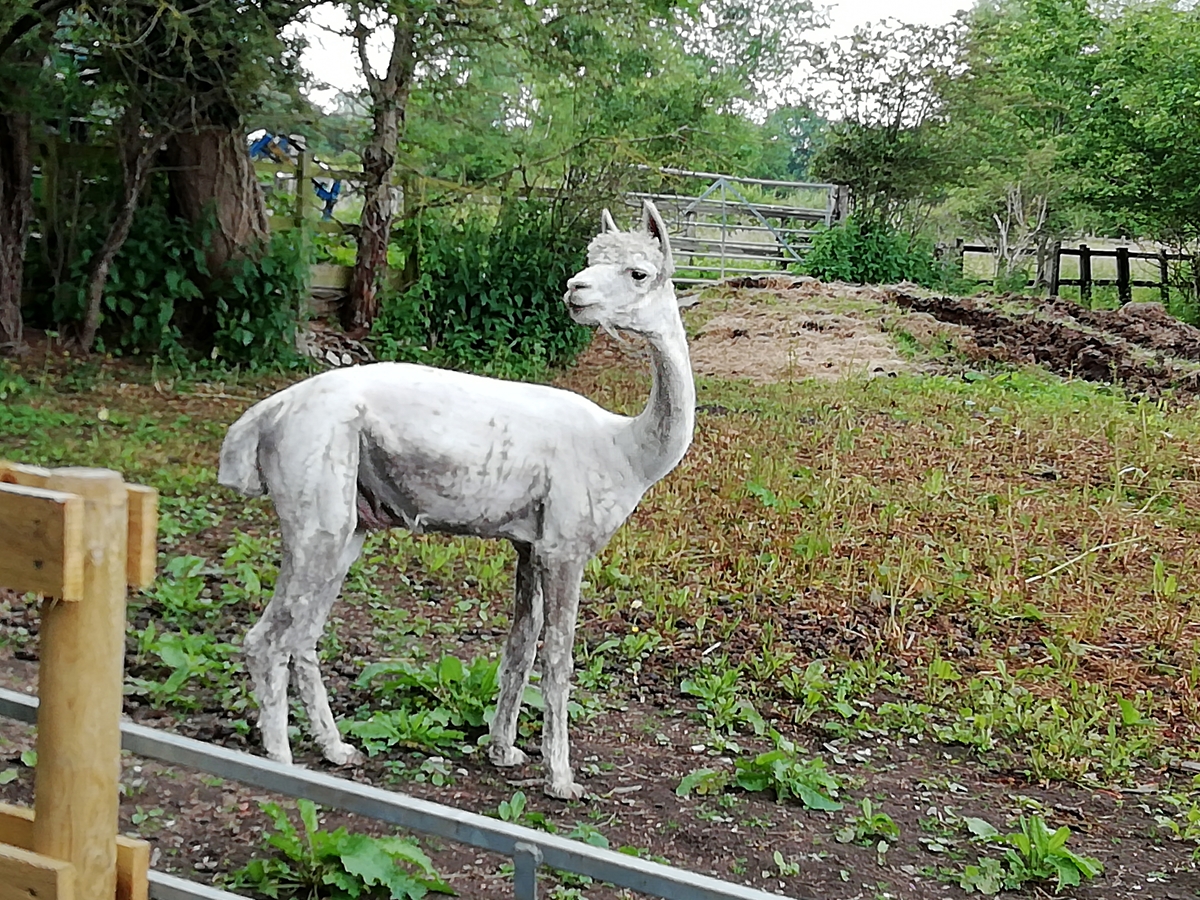


Anyone who walks along the canal between the Navigation and Proctor’s Park cannot fail to have noticed the five alpacas grazing
peacefully in a field. Last summer, when I saw that they, like sheep, had been sheared, I wanted to find out more.

The white alpacas are Huacaya alpacas and they are Maisie, Alice, Cariad and Koda. The brown one is Simi, and he’s a Suri alpaca. They belong to Clare and Matt Clark who moved to Barrow about 10 years ago to a property which included the land. They bought alpacas to manage the field because they thrive on wet land (they have feet, not hooves), don’t want lush green grass and are generally healthy animals. Clare told me that each alpaca has its own personality, especially Simi who is nosy, cheeky and always the first one to challenge anything.
Clare phoned me when specialist alpaca shearers arrived for the annual haircut and overall alpaca beauty day so I was able to go along and watch. Shearers, Sophie and James, are a family team based in Cheshire and have their own alpacas which they farm for the wool. They travel Great Britain, shearing over 2,000 animals a year and had just finished shearing 600 alpacas in Scotland. Clare had all five of hers waiting in a stable and they watched with keen interest as each took their turn to be sheared. The only one who showed any agitation was Cariad, when her front legs were touched. James explained that they use their front legs for fighting and she obviously interpreted his touch as aggression and retaliated. The moment he stopped, she stopped and was once again very calm.

Each animal takes between 10 and 15 minutes to be fully sheared and produces two bags of different types of wool (about 5kg). The ‘blanket’ or body of the Huacaya alpaca gives the best quality, long wool which is good for knitting. Wool from the legs and neck is used for things like craft, insulation and felting. Alpaca wool is eight times warmer than sheep wool, is waterproof and is flame retardant, so the animals really do need to be sheared in the summer to give them relief from the heat. They are domesticated animals and would not survive in the wild; the heat would be too much for them (vicunas are the wild animals). Simi, the Suri alpaca, has a fleece more like dreadlocks with hollow fibres so he only gets sheared every-other year. He did, however, get his fringe trimmed and had the same ‘extra beauty treatments’ as the others. This included having their toenails clipped and their teeth checked. Alpacas do not have upper teeth, just a tough upper dental pad and it’s important to check that the lower teeth have not grown too long which would make the pad sore. All were in good condition, so general wellbeing vaccinations were administered and the alpacas were allowed back into the main field. They looked about half the size and seemed much more ‘deer-like’ than when sporting their full fleece.
I’d like to thank Clare and Matt; Sophie and James; Maisie, Alice, Cariad, Koda and Simi for allowing me to watch and share with you some alpaca beauty treatments!
Karisa Krcmar